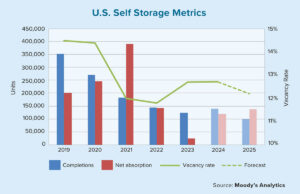How far will home prices drop in 2023? This question has real estate agents, mortgage lenders, economists and the federal government diving into spreadsheets, charting historical trends, and creating correlation coefficients and forward-thinking algorithms.
As a homebuyer, is it better to sit out 2023, or is it safe to enter the market and start looking? As a seller, is the more prudent decision to wait for price appreciation to return to positive territory?
Mortgage originators, along with the general public, have access to one of the deepest treasure troves of information to answer these questions. They can then start to formulate opinions to see whether any historical trends can be applied to this post-pandemic marketplace. The source? The Federal Reserve.
Historical perspective
When looking at the Federal Reserve’s historic timeline of census and federal housing data, there are a few charts that often are overlooked. Yes, one can see average home prices listed over time, but the data can be converted to see the year-over-year percentage change in housing prices. This view can provide a rich new perspective to the housing story.
When analyzing the data through this lens, it can be seen that there have been only three extended time periods in the past 50 years where national home sales prices have declined in value. The first time was during a recession in the early 1990s.
The second time was in 2008-09 during the Great Recession. This was the result of the subprime mortgage crisis and subsequent bank bailout. This time period represented the most dramatic price drop for the U.S. housing market in the past half century, as sales prices dropped by 8.5% from mid-2008 to mid-2009. For mortgage originators who weren’t in the business back then, that was when (imaginary) one-armed accordion players were receiving adjustable-rate mortgages with only a credit score and no requirement to disclose income.
The last time national housing prices dropped was in 2018 and 2019. Wait, what? Did anyone even realize there was a nationwide price decline a few years ago? The significant boom-bust-boom cycle of the economy from late 2019 through 2020 must have erased all memories of that.
Resumed reduction
Before exploring this thought further, it’s worth looking at the year-over-year percentage change in mortgage rates over the past 50 years. This is different from looking at simple mortgage rates over time, as it focuses on how much mortgage rates changed compared to the prior year.
Freddie Mac data shows that just before a recession, interest rates initially rise. On the back end of the recession, however, they are lower than when the recession started. For instance, before the Great Recession, interest rates on a 30-year fixed mortgage rose from 5.53% on June 30, 2005, to 6.78% one year later on June 29, 2006. Then the crash came. Before the recession had officially ended, rates had dropped to 4.78% on April 2, 2009, lower than before the economic turmoil started.
But this doesn’t answer the question about why national home prices declined in late 2018 and all of 2019. Deeper exploration shows that rates went higher in late 2017 and 2018. This was a reaction by the mortgage-backed securities market to the Federal Reserve cleaning out its balance sheet and putting the brakes on purchasing Freddie Mac, Fannie Mae and Federal Housing Administration loans.
As a result, 30-year fixed mortgage rates went from 3.78% on Sept. 14, 2017, to 4.94% on Nov. 15, 2018. The forward effect into 2019 was that the number of homes sold nationally dropped by nearly 12%. During this time, the Federal Reserve also was starting to pull money out of the economy. Starting in 2016 and running through July 2019, the federal funds rate rose significantly. This is starting to sound like the Fed’s actions of 2022, isn’t it?
Unprecedented increase
Rewind back to early 2020, as one can surmise, the COVID-19 pandemic forced the Fed to reverse its actions and save the economy from collapse. In 2020 and 2021, the Federal Reserve reopened its balance sheets and started to buy mortgage- backed securities (MBS) at levels never seen before — and pumped money into the economy at a pace not seen since World War II. This action, along with the federal funds rate returning to near zero, was arguably the reason why the MBS market reacted and produced the lowest fixed mortgage rates in the history of the U.S. in 2021.
Fast forward to 2023, and with the pandemic seemingly in the rearview mirror, the Fed is getting back to work in slowing economic expansion (i.e., the pandemic-fueled economic burst, which is arguably is what caused this historic period of inflation). In the opening months of 2023, is the economy back in the era of the subprime loan crisis and bank meltdown, or is it more in line with pre-pandemic policy?
At no time ever in the past 50 years have interest rates ever increased at such a fast pace (when looking at the year-over-year percentage change). At the start of 2023, rates were more than double what they were a year earlier, which has never happened before. That’s why there’s so much angst, so many questions and so few answers about today’s housing market.
Appreciated insight
It’s natural to wonder whether the country will adopt today’s rates as the new normal without an implosion of home prices. Will this year’s home price correction be on par with the 8.5% decline of the 2008-09 subprime crisis? Will it be closer to the pullback of 1.9% in 2019?
Take a breath and remember the discussion of the pre-pandemic economy. The Federal Reserve is seemingly trying to get the U.S. back in that lane. For mortgage originators, the bottom line is to be a resource to both new and old clients. Have an opinion and base it on historical data, then proactively communicate your opinion. In times of uncertainty, consumers are looking for guidance. Referral partners are looking for the same.
As more economic data becomes available, it’s OK to change the forecast. With all of the supercomputers the National Weather Service has to forecast the weather, they are only able to predict seven days out, and even that is not always correct.
The question remains, where will home prices drop to in 2023? Obviously, no one knows for certain. But you can generate an opinion using available data and offer these insights to your clients and referral partners. They’ll appreciate the perspective. ●
Author
-

Eric Simantel is a branch manager and mortgage originator for the Ryder Mortgage Group (dba C2 Financial) in Portland, Oregon. Simantel spent more than 17 years in the sponsorship and advertising world prior to getting his mortgage license in 2020. He received his MBA from the University of Oregon in 2002. He also earned a bachelor’s degree in marketing from San Diego State University in 2000.





